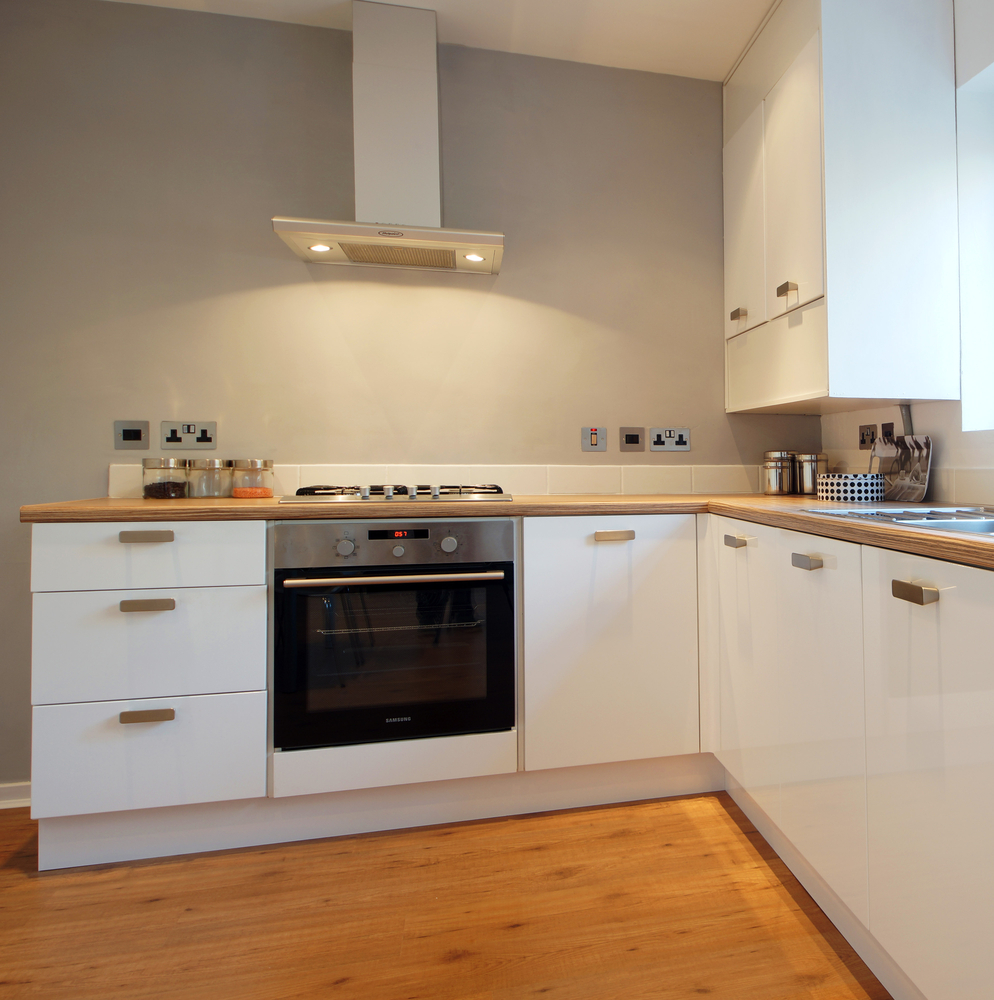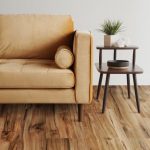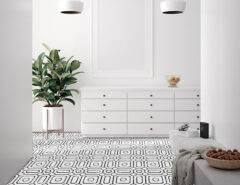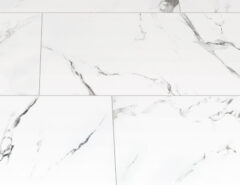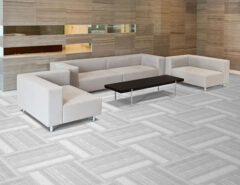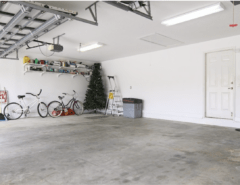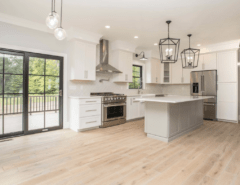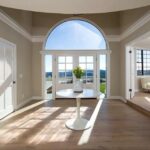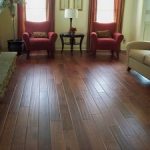If you want the natural look of flooring from a sawmill and the stability of engineered hardwood plus a finish that complements your decor, you need to consider rustic engineered hardwood floors. Hardwood flooring has always been a favorite of new home buyers and those in the house-flipping business because of its high return on investment (ROI) and the fact that hardwood floors frequently turn “maybe” buyers into sold clients.
Rustic flooring encompasses many different styles and each has its own complexion. Hand scraped, wire brushed, and wide plank are just a few of the textures available in the rustic genre of engineered hardwood flooring.
The term rustic wood basically describes hardwood flooring in its more natural state. There was a time when flooring that was less than perfect was not popular, but that has changed. In addition to the differences in surface textures, rustic flooring will contain more knots, small worm holes and other irregularities that are not found in the premier grades of hardwood flooring.
Homeowners are looking for character in wood that sets it apart and they are finding a myriad of choices in rustic engineered hardwood floors. In addition to the charm of natural wood, rustic flooring adds warmth and beauty to your home and may increase its value, but homes aren’t the only place you’ll find this beautiful flooring. Many upscale restaurants, bed and breakfast retreats, as well as retail outlets have selected rustic engineered flooring because it easily handles heavy foot traffic and still looks great.
So why is this style of flooring making a comeback?
- Goes with any decor — even a modern scheme
- Fits well in today’s popular farmhouse look
- Gives a traditional look and feel to your home
- Many colors and species to choose from as well as surface textures
- Rough surface hides scuffs and scrape marks
- Appealing to all age groups.
- So popular that it is mimicked by LVT and other non-wood flooring options
Historically, the term “rustic hardwood” is an industry standard that describes a grade of flooring that would normally be less than acceptable in residential housing. Some terms to describe this grade have been “cabin grade” or “tavern grade” and were often sold for industrial use. However, with modern manufacturing techniques, engineered rustic hardwood flooring is the best of both worlds:
- The beautiful surface texture of real distressed wood flooring; and
- The strength and durability of engineered flooring.
For some folks, shiny wood looks fake. They want the natural look of wood and the texture of rustic wood that lends personality to the floor and makes it the centerpiece of their home. Others find it hard to get comfortable on a floor that looks like it has to be ready for a magazine photo shoot all the time. Rustic wood flooring is easy on the eyes and the budget.
What Makes Engineered Hardwood Different From Traditional Hardwood?
The difference between engineered hardwood and traditional hardwood lies below the surface. Traditional hardwood is a solid piece of lumber — there are no layers. It is run through a series of wood molders and shapers that give it the final tongue and groove configuration necessary for the market.
Engineered hardwood has a top layer that is made of hardwood such as Pine, Hickory, Maple or Oak, but there are layers below the veneer that are constructed of plywood or other wood substrate and manufactured in such a way as to give the flooring more strength and stability than solid wood; especially in high moisture areas.
Composition
Rustic engineered hardwood is composed of a solid hardwood veneer (wear layer) on the surface that is supported below by multiple layers of wood or wood derivative products that are held together tightly with adhesive in alternating plies or layers. This is done to minimize expansion and contraction and will ensure that the finished flooring will be stable in conditions where the humidity cannot be tightly controlled.
A high quality engineered hardwood floor will have a wear layer that is at least ⅜” thick and will be supported by a multi-ply hardwood plywood backing. The more plies used in the core and the harder the wood in the core will determine how durable the flooring will be.
Installation
Rustic engineered hardwood flooring can be installed using various methods:
- Glue-down. The flooring is glued directly to the subfloor. Nails or staples are not required since the glue holds the flooring. This method can be used on wood subfloors as well as concrete.
- Nailed or stapled. With this method, the flooring is installed on a wood subfloor and a nailer or stapler made specifically for this task is used to attach the flooring to the plywood below.
- Floating floor system. This method is by far the easiest and the most versatile. A moisture barrier is laid down first and then the planks are joined together by clicking the two panels together and then laid down This allows for mistakes to be corrected because the floor can be adjusted until it is completed. It is also great for the DIY person, as it requires no special tools and the process is quickly learned after a few pieces have been installed.
Tightness
An advantage of engineered hardwood flooring over traditional solid wood is how it fits together. Wood moves and changes based on temperature and humidity. A solid piece of wood is going to react to those two elements resulting in expansion and shrinking throughout the piece of flooring. You may get an uneven fit between two pieces of natural wood as the groove in one board no longer matches the machined tongue in the other.
Engineered flooring overcomes that problem because of the layers that make up the product. The only solid wood is the top veneer and it is only about ⅜” thick, so there is very little wood to react with the heat and moisture. The plies below the veneer are small and laid at 90 degree angles to each other resulting in very little opportunity for movement.
Lifespan
Rustic engineered hardwood floors should come with at least a 25-year warranty on the flooring and often the same warranty will be given for the finish. If the surface veneer is ⅜” or greater, you can often refinish the floor one or two more times extending the life of the flooring to 50 years or more.
Available for Any Room in Your House
Engineered hardwood floors are more versatile than solid wood floors because they are not subject to issues due to moisture. This means that you can put engineered flooring below-grade in a basement, in the kitchen, laundry room, and even bathrooms. They are not all waterproof, but they are highly resistant to moisture because of their construction.
Cost
On average, you will pay less for rustic engineered hardwood flooring than for solid hardwood. The typical cost for engineered hardwood is in the $4-$8/sq. ft. range, but you can save on the installation charges if you do the work yourself.
Rustic Engineered Hardwood Flooring Styles
Hand-Scraped
In days gone by, this type of flooring was made by master craftsmen taking a scraper and going over the surface of each board a foot at a time until they achieved the desired look. The finish would have uneven areas, pockets and even scratches and dents that gave it the character that made it popular. Today, this is accomplished through expensive machining, but still produces a similar look at a fraction of the cost.
Wire Brushed
This method gives a softer look to the surface of the flooring, because the wire brushing pulls the softer grains of wood to the surface and leaves the harder grains intact. It is probably the most authentic rustic look produced today and is popular because it wears well over time.
Wide Plank
Normal wood flooring is manufactured in widths between 2-3”. Wide planks come in 5” and greater widths — some up to 20”. This adds a handsome look to the floor and gives the appearance of the floors in the 18th and 19th century made from sawmill lumber that varied greatly in dimensions. Engineered wide plank is made the same way as the narrow widths, it just utilizes wider veneers.
Popular Rustic Engineered Hardwood Flooring Colors
Maple
A beautiful hardwood that is naturally lighter but can be stained to achieve almost any look, Maple produces some of the hardest flooring made. You see it most prominently as bowling alley lanes and also as furniture legs. It has been described as creamy pale and it can also be almost white if treated properly.
French Oak
This is often referred to as European Oak since that is the actual region it comes from. It is very strong, durable, stable and finishes well. It is frequently manufactured in light brown brown to dark brown shades.
Hickory
Hickory is the hardest of the flooring options from North America and it is known for its contrasting shades of light yellow to mid-browns giving a hickory floor a most unique look.
Reclaimed
Reclaimed wood will exhibit the colors of its parent species. Its appeal lies in the natural variations and textures in the wood that are brought about by decades or centuries of exposure to the elements. A big advantage of reclaimed wood is that it is often more stable than wood used today because it comes from old growth trees. There are few old-growth forests left today where wood is still being harvested for mass sale.
The Best Place to Buy Rustic Engineered Hardwood Flooring
Finding the right source for rustic engineered hardwood flooring can be a challenge. You’ll want to speak with professionals that can steer you in the right direction based on your specific needs and budget. You will also want a variety of options to choose from — not just the flooring of the day sale selection.
BuildDirect has many varieties and colors of distressed flooring to choose from and we offer free samples of all of our flooring. Shop online for weekly specials and discounted clearance items that can help you create your new floor without breaking the bank.
Take it a step further and become a BuildDirect PRO member to get improved customer service, express shipping, and loyalty program discounts. Impress your clients with a broad selection of rustic engineered hardwood options today.




